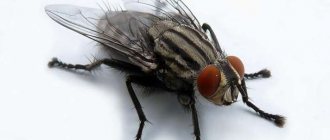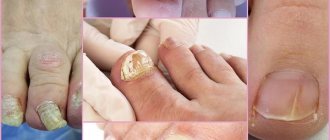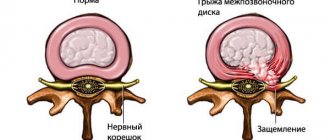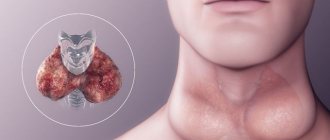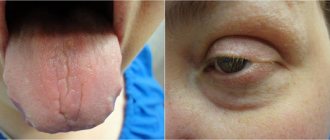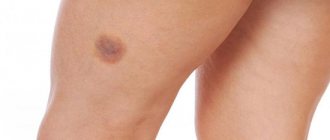Owners of furry pets often face such a serious problem as an allergy to cats. But even those who do not have an animal in their home sometimes suffer from an allergic reaction. Doctors name certain symptoms that can be used to draw conclusions about the degree of development of the disease. To confirm or refute the fact of a cat allergy, diagnostic tests are performed. If the answer is positive, treatment is prescribed that supports the immune status and helps, if not get rid of the allergy, then keep the process under control.
What is a cat allergy?
The term “cat allergy” refers to a specific reaction of the human body to contact with proteins contained in cat secretions (saliva, urine, tear secretion, epithelium). Scientists have identified up to ten proteins that persist in the environment for a long time and provoke disease: secretoglobin, lipocalin, serum albumin and others.
By licking itself, the animal carries allergen proteins onto its fur. This is how a misconception arose that an allergy to cats is caused precisely by fur, which can remain on objects and even in the absence of a pet in the room, cause symptoms of inflammation.
The problem of cat protein intolerance is relevant for both adults and children. During certain periods it may worsen or, conversely, disappear. An allergic reaction depends on the person's health status. It has been noted that the manifestation of symptoms can be influenced by stress, hormonal imbalances, and weakened immunity.
Russia ranks fifth in the number of domestic cats. According to estimates, 33.7 million cats live in Russian homes. With such high figures, statistics show that 15% of the population are prone to allergies to wool. The risk group includes people who already suffer from hay fever. It is noted that a quarter, that is, 25% of owners of four-legged pets, to one degree or another, experience the negative impact of “aggressive” cat proteins. Research results indicate that people who are allergic to cats are also intolerant to other allergens (certain food proteins or pollen).
Scientists confirm the fact that heredity plays a large role in the development of a painful reaction to cats. If the parents are healthy, then the chances of the offspring developing allergies are only 10-15%. When a mother or father suffers from this disease, the risk for children increases to 30%. In families where both parents are allergic, the potential threat to children can reach 50%.
Symptoms of a cat allergy
Signs of an ongoing reaction may appear immediately upon contact with the allergen or after some time. The degree of manifestation of allergy symptoms depends on the body's resistance and the concentration of proteins in the environment. The onset of a cat allergy is judged by one or several indicators at once. Symptoms include:
- runny nose;
- nasal congestion;
- burning in the nasopharynx;
- sneezing;
- cough;
- labored breathing;
- blisters, skin rash;
- redness of the integument;
- skin itching;
- lacrimation;
- swelling and inflammation of the eyes;
- headache;
- lethargy.
Almost all symptoms of allergies to cat, food, and pollen proteins are similar. Therefore, it is important to identify the allergen
Signs of an allergy gain maximum strength 2-3 hours after the start of contact with the allergen. The accumulation of reactive proteins in the human body triggers the synthesis of antibodies and a biochemical chain reaction, the result of which manifests itself in the form of non-infectious inflammation of the mucous membranes. Most often, allergies in adults and children occur in the form of respiratory and skin symptoms. All the signs are described in more detail in the video:
How it manifests itself in the body
Allergies to cats manifest themselves in different ways. It all depends on the individual sensitivity of the human body to the allergen. For some, the presence of an allergic reaction is indicated by a rash or redness of the skin, while others suffer from a stuffy nose, etc. But the most dangerous manifestation of allergies is suffocation due to swelling of the respiratory tract. This condition requires emergency medical attention. But it is rarely observed (10-12% of cases).
In addition to the above (most common) manifestations of an allergy to a domestic cat, the pathological condition makes itself felt by a number of other signs. Since the manifestations overlap each other, which makes the clinical picture unclear, or they are not noticed against the background of other, more serious ones, it is rational to distribute the signs of an allergic reaction depending on the organ system in which they developed.
From the respiratory system
How an allergy manifests itself depends on the place of contact of the allergen with the cells of the immune system, the amount of the allergen, and the person’s sensitivity to it. Depending on this, the following manifestations of allergies are distinguished:
- stuffy nose;
- cough;
- hoarse voice;
- presence of shortness of breath;
- development of cyanosis.
A stuffy nose is a sign of an allergic reaction such as rhinitis (inflammation of the nasal mucosa). This manifestation is observed in 50% of patients. With the development of acute rhinitis, the nasopharyngeal mucosa swells and nasal breathing becomes difficult. The chronic form is characterized by the proliferation of lymphoid tissues on the tonsils of the palate and the mucous membranes of the air sinuses of the skull and respiratory passages.
The development of a cough is the 2nd most common manifestation of an allergy to a cat. It is observed when swelling of the larynx and trachea begins, as a local manifestation of allergic inflammation. During the first hours or days, the cough is dry and painful, then, when infection occurs, it becomes wet. The development of a cough indicates the “start” of a pathological process, which can develop into pronounced swelling of the larynx.
The voice becomes hoarse due to the development of allergic swelling of the vocal cords - they change shape. As a result, the frequency and amplitude of their vibration changes, which others and the patient himself perceive as hoarseness. The condition develops in parallel with the development of a dry cough and indicates the possibility of developing severe laryngeal edema. Hoarseness requires immediate medical correction.
The development of shortness of breath is an unfavorable factor in which there is a threat to life. With allergies, shortness of breath of 3 types can develop: inspiratory (difficulty inhaling), expiratory (difficulty exhaling) and mixed. Inspiratory dyspnea is characteristic of damage to the upper respiratory tract, expiratory dyspnea is characteristic of an asthma attack. The mixed type of shortness of breath is rare and develops with the development of pulmonary edema.
Cyanosis is a blue discoloration of a specific area of the body (peripheral cyanosis) or the entire body (total). Develops with oxygen starvation of tissues. The peripheral form indicates mild (blue discoloration of the nasolabial triangle) or moderate (blue discoloration of the extremities) oxygen starvation (see photo). Total cyanosis is a sign of severe oxygen deficiency.
Skin manifestations
Skin reactions occur due to allergen contact with weakly protected (dry, flaky, irritated) or injured skin. The first manifestations are always local in nature (develop at the site of contact of the substance with the skin). When an allergen re-enters an organism that was previously in contact with it, a widespread reaction develops, covering the entire surface of the body. The following are the main skin symptoms of allergies :
- rash;
- itching;
- development of angioedema.
In 80% of cases, rashes are local in nature, but can appear on the entire surface of the skin. They appear as small red or dark pink spots that appear at the site of contact with the allergen. First, they are placed on the same level with the unchanged skin, then (after 10-40 minutes) they begin to rise above the skin level, enlarge and merge. Then, due to the accumulation of fluid in them, the spots turn into blisters. When an infection attaches, they fester.
If an allergen enters the body through the mucous membrane of the digestive tract, a diffuse rash is observed. In this case, the rash primarily appears on the torso, buttocks, elbows and popliteal folds. The shape and development of the rash does not differ significantly from that of a local rash. But due to the large volumes of skin, the formation of large, fused blisters is possible, which form on the back or abdomen.
In 90% of cases, itching develops parallel to the rash. Most often it coincides with the localization of the rash. The severity of itching varies depending on the nature of the rash, from mild to unbearable. At the same time, you need to know that itching develops not only with allergies, but also with other pathologies of infectious and non-infectious origin. However, itching combined with the sudden appearance of red or dark pink rashes is a sign of an allergic reaction.
Angioedema refers to Quincke's edema. It is characterized by an exclusively allergic nature and affects only those areas in which loose connective tissue is well developed. In most cases, the swelling extends from the face to the legs. Basically, with Quincke's edema, damage is observed: eyelids, lips, neck, larynx, digestive tract, genitals. Particularly dangerous is cerebral edema.
Vegetative signs
Allergies manifest as autonomic disorders when an allergen is introduced into the blood. Immune cells and specific antibodies, in contact with an allergen, form complexes such as allergen-lymphocyte and allergen-antibody. With a large number of such complexes in the blood, many specific substances are released that affect the level of blood pressure, which is why symptoms of oxygen starvation of tissues develop. Vegetative manifestations include:
- tachycardia (rapid heartbeat);
- increased breathing rate;
- lack of coordination;
- syncopal loss of consciousness.
Tachycardia means an increase in heart rate above 90/min. With allergies, it develops in response to a decrease in blood pressure due to the presence of a large number of immune complexes in the blood. Tachycardia is a natural protective mechanism of the body and is manifested by a feeling of discomfort and increased pulsation in the chest, behind the sternum, in the head, less often in the eyeballs, and a sudden feeling of fear.
An increase in respiratory rate is associated with the development of hypoxia (oxygen starvation), which occurred due to swelling of parts of the respiratory (breathing) system. Also, the breathing rate increases against the background of the development of a sudden feeling of fear, which occurs when there is a lack of oxygen. Fear provokes a significant release of hormones into the blood, which, in turn, affect the respiratory center, which leads to an increase in the frequency of respiratory movements.
Loss of coordination manifests itself as dizziness, nausea and loss of balance. It develops due to hypoxia of the cerebellum, which is responsible for maintaining balance. Against the background of disorientation and constant dizziness, nausea develops, which can lead to vomiting. Due to hypoxia of the tissues of the cerebral cortex and subcortex, the allergic person loses consciousness - a syncope develops. A drop in blood pressure also leads to loss of consciousness.
Damage to the gastrointestinal tract
Manifestations of allergies to cats and cats from the digestive tract develop when the allergen enters through the mouth. Most often, signs of damage are observed before the age of 3 years. This is due to the fact that children at this time study objects, tasting them, and do not follow the rules of hygiene. In adults, manifestations of allergies from the gastrointestinal tract are rarely observed, since they adhere to hygiene rules and process food. When an allergen enters the digestive tract, the allergy manifests itself:
- abdominal pain;
- vomiting;
- diarrhea.
Abdominal pain occurs as a result of the development of a local inflammatory process in the stomach or intestines. In this case, the intestine is damaged during contact with the allergen, and the stomach is damaged as a result of a significant release of histamine into the bloodstream, which produces gastric juice that corrodes the walls of the organ. The pain syndrome is characterized by a wave-like character. The pain does not go away on its own and requires the use of medications.
Vomiting is common in childhood. Its development is associated with the immaturity of the nervous system. In just 2-10 minutes. After the allergen enters the body, the first urge to vomit occurs. Long-term vomiting leads to pain and can cause the development of gastritis or ulcers. In addition, prolonged vomiting leads to dehydration, which is extremely dangerous in childhood.
Diarrhea is observed 2-6 hours after the allergen penetrates inside. Diarrhea develops according to the principle of inflammation of the small intestine. The urge to defecate can be observed up to 20-30 times during the day. The stool is liquid, watery, has a putrid odor, contains mucus, and rarely has blood streaks. Redness and peeling are often observed in the area near the anus, which is caused by skin irritation from released allergens.
Useful: How long does the swelling last after a wasp sting?
Allergy diagnosis
Before deciding to continue keeping a cat in the house, it is necessary to assess the symptoms, the risk of complications and carry out an accurate diagnosis. Laboratory tests help determine the very presence of allergies and determine the exact allergen that caused the reaction. Allergy tests are divided into general and narrow. The first includes a blood test for immunoglobulin E. Based on its results, a conclusion is made about the presence or absence of an allergy as such.
The second group of analyzes includes the scratch test. Several light scratches are made on the skin on the inside of the forearm. A solution containing a specific allergen, including one that causes allergies to cats, is applied to each one. After half an hour, the condition of the skin in the scarification area is assessed. In case of individual intolerance to a certain type of protein, the area around the scratch turns red.
Common diagnostic mistakes
In some cases, cat allergy symptoms can be misleading. The culprit of hives or rhinitis turns out to be not a beloved pet, but a completely different object. This situation occurs if a cat walks freely on the street and brings plant pollen, traces of mold, and dust into the house on its fur.
The second case of misdiagnosis involves cat cosmetics, litter or food. Pet shampoos and conditioners may contain fragrances and preservatives that cause signs of allergies in an adult or child. Cat toys, litter, and dry food can be a source of volatile compounds that enter the human respiratory tract and initiate coughing and sneezing.
Cat allergies share similarities with some zoonotic diseases. A cat can be a carrier of chlamydia, scabies, and lichen. By petting a sick kitten, a person risks becoming infected. To exclude a serious infectious disease, appropriate analyzes and tests are performed.
Diagnostics
Even if it seems that all manifestations of allergies are present, it is worth consulting a doctor to clarify the diagnosis. A blood test to determine the presence of immunoglobulin E and a test injection will help determine whether there is an allergy and what is causing it. While the diagnosis is being clarified, it is better to stay at a safe distance from the source of allergens.
Laboratory analysis can replace a rapid test that you can do yourself at home. A drop of blood is applied to a special test strip and the result is assessed after half an hour. The algorithm of actions can be found in the instructions. This method is highly accurate, but you still shouldn’t trust it 100%. In any case, you cannot do without the help of a specialist.
How to get rid of cat allergies
Any allergy, including to cats, is considered a difficult to cure illness. The best way out is to exclude the source of reactive proteins from the immediate environment. But cat owners do not always agree to part with their beloved pet. Such a drastic measure is necessary if an allergy to a cat manifests itself in the form of asthma. Reluctance to make a radical decision and find a new home for a kitten can sometimes threaten a person not only with serious illness, but also with life.
If the symptoms are not critical and are limited to urticaria or rhinitis, there is a chance to correct the situation with treatment and proper care for the cat. Therapy for allergies to cats consists of the use of medications, immunotherapy and the use of folk recipes. One of the main components of this treatment is described in the video:
Immunotherapy
Allergen-specific immunotherapy is carried out by knowing exactly which allergic irritant causes the reaction. The goal of such treatment is to strengthen the body's natural defense mechanisms against a specific substance. To get rid of allergies, the course begins with small doses. Gradually the amount of substance increases.
A person receives the allergen in its pure form. It is administered into the body by injection, inhalation, nasal drops or in tablet form. The course can last several months and often requires repetition over 3-5 years. In this way, it is possible to cure allergies to cats in adults and preschoolers over five years of age. The method has contraindications and limitations. It is not used for elderly people and patients suffering from oncology, severe asthma, chronic infections, and mental disorders.
Immunotherapy should only be carried out under the supervision of the attending physician.
Medicines
Drug therapy for cat allergies is aimed at alleviating symptoms. For this purpose, a person is prescribed antihistamines that block histamine receptors, a substance produced in excess during the allergic process. The following medicines are used:
- Suprastin.
- Tavegil.
- Zyrtec.
- Loratodine.
- Disal.
A stronger effect is provided by drugs containing corticosteroid hormones: Diprospan, Celeston, Kenalog. The effect of one injection lasts up to two months. For allergies in children, such drugs are prescribed with extreme caution, as they cause a lot of side effects, affecting the hormonal system of the growing body.
To reduce skin rashes and relieve itching, external medications (Advantam, Ecolom) are used. Special sprays and nasal drops (Nazarel, Cromohexal, Fluticasone) partially eliminate swelling of the mucous membrane and mucus secretion. For severe headaches, the doctor may prescribe antispasmodics (No-shpu, Drotaverine). In some cases, enterosorbents (activated carbon, Ultra-ardsorb, Polysorb, Enterosgel) are beneficial. These drugs improve the removal of harmful compounds from the body and reduce intoxication due to allergies. A supporting component of drug therapy is taking vitamins C, E, and group B.
Folk remedies
Medicinal plants provide support to traditional allergy treatments. Their use is aimed at adjusting immunity, improving metabolism, fortifying the body, and restoring mucous membranes. Decoctions and infusions are used for oral administration, gargling, lotions on the skin, baths and trays. To prepare home remedies for cat allergies, the following are suitable:
- Chamomile.
- Kalina.
- A series.
- Kalanchoe.
- Nettle.
- Yarrow.
- Rose hip.
- Peppermint.
- Celery.
- Violet.
Shilajit has a healing effect against allergies. Dissolve 1 gram of the product in a liter of water and take 100 ml on an empty stomach in the morning. For children aged 2 to 8 years, the dose is halved. Eye lotions are made from tea leaves or millet. To prepare millet broth, boil 1 tablespoon of cereal in 250 ml of water over low heat for 15 minutes.
When making preparations from medicinal plants, you should consult a doctor: many herbs themselves are sources of allergens and can increase allergic symptoms in a sensitive person
Review of antihistamines for allergic reactions
In modern medicine, the third generation of drugs is used.
- The first generation of drugs caused a sedative effect. The drugs did not relieve allergy symptoms, but only dulled them, causing lethargy, apathy and drowsiness in patients.
- The second generation of drugs no longer had this disadvantage, but the active ingredients had a negative effect on the heart.
- The third group of antihistamines was developed taking into account the shortcomings of previous drugs. The effect after administration of the medicine occurs quickly and lasts for a long time.
The most common anti-allergy medications:
"Kestin"
The active ingredient is ebastine. The duration of action of “Kestin” is about two days.
Indications: The medicine helps with various types of allergies (to animals, pollen, dust, food) and even with bronchial asthma, in some cases it is prescribed for allergic skin rashes and swelling.
Release form: syrup and tablets. "Kestin" in syrup is intended for small children; adults are recommended to take tablets, since their speed of action is higher. Dosage – 2-3 lozenges per day during periods of exacerbation.
Restrictions on use: the drug is prohibited for use by children under three years of age, pregnant and breastfeeding women, and patients suffering from liver diseases. There is no sedative effect, it does not cause weight gain, and you can drink alcohol during the treatment period.
"Claritin"
The active ingredient is loratadine. Improvements occur half an hour after administration. The main advantage of Claritin is its safety; it is approved for use by pregnant women, children and the elderly.
Indications: allergic reactions, respiratory diseases (runny nose, sneezing, cough). The course of treatment is a week, the dosage of the drug is chosen by the attending physician depending on the severity of the disease.
The only contraindication is the period of breastfeeding.
Claritin does not have a sedative effect, does not lead to weight gain and does not exclude the use of alcoholic beverages. The form of the drug is tablets. The cost of the medicine is quite high, but it is fully justified by its effectiveness.
"Tsetrin"
Indications: The drug is used for allergic rhinitis and reactions in the form of a rash on the body. The effect occurs an hour and a half after administration. Approved for use by children over 6 years of age, contraindicated for pregnant women and nursing mothers. The course of treatment is 7-10 days, 2-3 tablets.
Restrictions on use: During the treatment period, it is not recommended to drink alcoholic beverages, as they slow down the effect of the drug. In case of renal failure, the dosage should be halved.
"Vertex"
Relatively inexpensive, but at the same time quite effective medicine. The effect occurs within a couple of minutes after administration. Release form: tablets.
Indications: acute allergic reactions. "Vertex" is most effective for respiratory symptoms of the disease: runny nose, sneezing, coughing, as well as for skin reactions in the form of itching, irritation or rash.
The course of treatment is 5 days, 1-2 tablets per day. The product is approved for use by children over 3 years of age, as well as pregnant and lactating women.
Possible side effects in the form of sedation and cardiotoxic effects.
"Zodak"
The medicine is available in the form of drops for children and tablets for adults. Treatment with Zodak is not recommended for pregnant women and nursing mothers. Very rarely, sedation may occur when taken. The active ingredient is cetirizine. The duration of the effect after administration is about two days.
During periods of exacerbation of the disease, take 1 tablet. "Zodak" is effective not only for standard allergic reactions (runny nose, irritation and the appearance of a rash on the body), but also for critical situations, for example, with Quincke's edema.
Please note that treatment with medications must be clearly agreed with your doctor.
Allergy to cats in a child
Some experts believe that a person born and raised in a home with a cat acquires a healthy immunity to its allergens. However, this statement is refuted by facts from life. Experience shows that children's bodies are not resistant to the effects of specific proteins. An allergy to cats acquired in childhood often lasts a lifetime and is difficult to cure.
If dangerous symptoms are detected in the baby and diagnostics show that the cause is a cat, all possible measures must be taken to stop the process. If there are no reasons to abandon the pet, and the disease itself proceeds without dangerous progress, parents can, after consultation with the treating allergist, develop a treatment regimen.
In a home where a child with a cat allergy lives, all precautions must be taken. The children's room should always be clean. It is recommended to wash toys periodically. The cat's food bowls and litter box should be placed in places away from the bedroom.
If a child develops bronchial asthma due to an allergy to a cat, the pet urgently needs to find a new owner
Precautions if a cat lives in the house
Living together with a cat imposes certain rules and restrictions. If it is impossible to part with your pet, then a number of measures should be taken that to some extent reduce the allergic reaction and make the sensitive person feel better. They relate to cleaning the house and caring for the animal.
Firstly, it is necessary to limit the cat’s access to the allergy sufferer’s room and especially to his bed. Secondly, the apartment must be wet cleaned frequently (at least twice a week). The number of carpets in the house should be kept to a minimum. If they are nevertheless laid on the floor, then the vacuum cleaner bag is emptied of its contents immediately after cleaning. The ideal option is to use disposable drives. Thirdly, the house must be regularly ventilated, even in cold or windy weather. An air purifier can provide great support for cat allergies.
The rights to carry out hygiene procedures for the cat should be given to a person who does not suffer from allergies. When combing wool, an allergic person should not be nearby. About once a week the cat is bathed with shampoo. The soap solution washes away loose epithelium, gland secretions, and traces of urine and saliva from the surface of the coat and skin. Cat play accessories and bedding are always kept clean. Clothes should not be left in places accessible to the cat, so that they do not fall on them and leave fur.
Preventing cat allergies
Even if an allergy to cats does not make itself felt, it is necessary to take preventive measures. This allows you to reduce the risk of disease in case of decreased immunity or a stressful situation, when the body becomes most susceptible to foreign agents.
Prevention includes all the rules for keeping a cat in a house where an allergy sufferer lives. Keeping your apartment and cat area clean helps reduce the concentration of allergens in the air and on the surfaces of objects. It is advisable to use gloves when brushing your pet and cleaning the tray. It is advisable to replace the open cat litter box with a house with a covered entrance, into which the cat can enter and exit at any time.
In 2020, allergists from the University of Washington brought good news for everyone who loves fluffy cats. Scientists from the Nestle Purina research department have developed an innovative food additive for cat food. It contains substances that, when consumed over a long period of time, reduce the production of proteins that are dangerous to humans in cats. This additive has already been tested in laboratory conditions and may soon appear on the market.
Hypoallergenic cats
If you know for sure that you suffer from cat allergies, but dream of becoming the owner of a furry miracle, pay attention to the following information.
Sphynxes are animals that have little or no fur.
According to studies conducted by allergists, there are no absolutely hypoallergenic cat breeds in nature. However, some of the representatives of this family produce the allergen, which is a specific protein, in smaller quantities than others.
Please note: a smaller amount still implies its production, but less intense. However, you still need to be careful, as even animals without hair continue to wash themselves with saliva.
So, here is a list of breeds that are suitable for living with allergies:
- Siberian cat;
- Cornish Rex;
- sphinx;
- Bengal;
- colorpoint;
- Siamese;
- Devon Rex;
- oriental;
- Balinese;
- Burmese;
- Russian blue.
Siberian cat
All the breeds listed above look impressive, their representatives have extraordinary intelligence and love of humanity, so you can get along with them without any problems.

